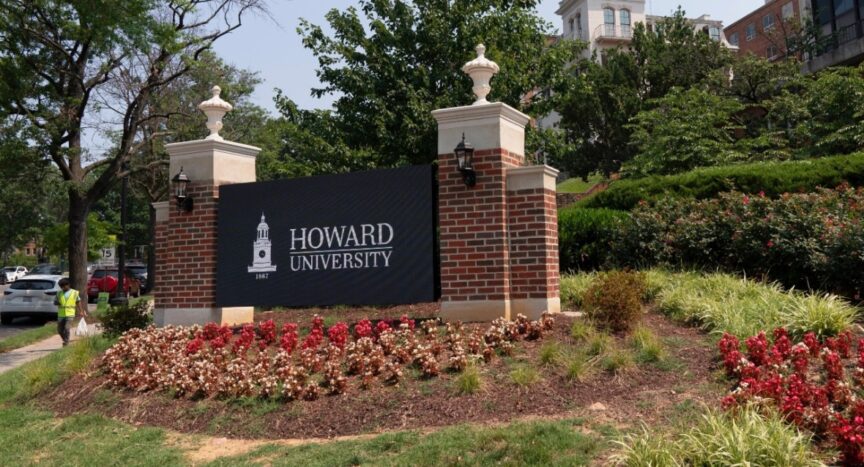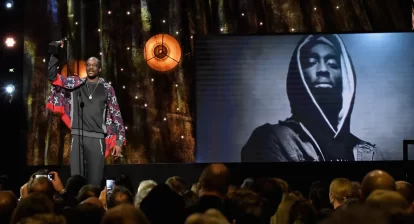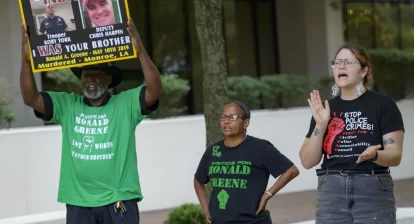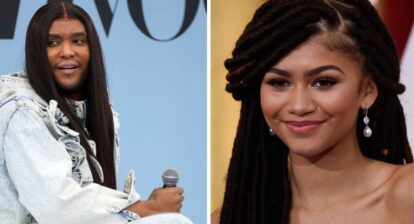Six HBCUs, including Howard, are named on the annual list that highlights 500 top-performing schools in the US.
If there was ever a year to sojourn to the nation’s capital for Howard University’s Homecoming, this may be the time.
This year’s festivities will occur not only as one of the school’s distinguished alumni is running for President of the United States but also after Forbes magazine ranked the school as number one among historically Black colleges and universities.
Six HBCUs, including Howard, made the annual list of 500, which is curated from the more than 5,000 colleges and universities in the United States. The list highlights the top 500 schools that routinely “produce successful, high-earning and influential graduates from all economic backgrounds, with less student debt.”
Howard is ranked 273rd, ahead of Spelman and its brother school Morehouse in Atlanta, Florida Agricultural and Mechanical University (also known as FAMU), North Carolina A&T, and Hampton University in Virginia.
“Howard University’s top ranking among HBCUs adds momentum to our march into the upper tier of the nation’s research institutions,” Howard University President Ben Vinson III, Ph.D said in a release responding to the ranking. “Howard’s singular influence at the nexus of intellectual discovery and global culture cannot be overstated, and we will continue to push the boundaries of knowledge to help the world solve its most pressing challenges.”
Recommended Stories
- Harvard reports slight decline in Black students in wake of affirmative action ruling
- As a new school year starts, Black student enrollment is down at multiple elite colleges
- What are the most regrettable college majors?
- South Florida Fashion Academy empowers high school students with traditional and vocational education
- Oprah Winfrey to host and produce ABC special on artificial intelligence
Notably, the inclusion of HBCUs has doubled from last year’s three. This list also arrives as high school seniors are beginning to prepare college applications under the new realities of an admissions process devoid of affirmative action. Consequently, more and more predominately white institutions, including Harvard, report significant decreases in Black student enrollment. At the very least, this year’s list attempted to highlight schools with less exclusive admission rates.
“While we don’t consider schools’ acceptance rates in our rankings, this year we decided to allay some high schoolers’ admissions angst by highlighting excellent schools that don’t have the sub-10% admission rates of a Princeton, Stanford, or MIT,” the list’s authors wrote. “Thirty-eight of our top 100 schools admit more than 30% of applicants, and 16 of them admit 50% or more—in other words, these are great schools with less admissions stress.”
!function(){var g=window;g.googletag=g.googletag||{},g.googletag.cmd=g.googletag.cmd||[],g.googletag.cmd.push(function(){g.googletag.pubads().setTargeting(“has-featured-video”,”true”)})}(); ( () => { ( ( cb ) => { window.tpd = window.tpd || {}; if ( true === tpd.cmpReady ) { console.log( ‘[TPD][Brid] CMP was already ready, running player.’ ); cb(); return; } let tpdCmpReadyListener = () => { console.log( ‘[TPD][Brid] CMP ready event fired, running player.’ ); window.removeEventListener( ‘tpd:cmpCb’, tpdCmpReadyListener ); cb(); }; window.addEventListener( ‘tpd:cmpCb’, tpdCmpReadyListener ); } )( () => { let s = document.createElement( ‘script’ ); s.src = ‘https://player.target-video.com/player/build/targetvideo.min.js’; s.async = true; let target = document.getElementById( ‘Brid_21951’ ); target.parentElement.insertBefore( s, target ); window._bp = window._bp || []; window._bp.push( {“div”:”Brid_21951″,”obj”:{“id”:”41122″,”width”:”1280″,”height”:”720″,”stickyDirection”:”below”,”playlist”:”21951″,”slide_inposition”:”.widget_tpd_ad_widget_sticky”}} ); } ); } )();






